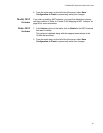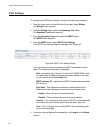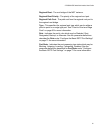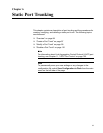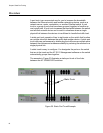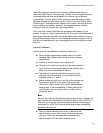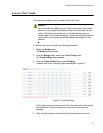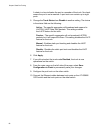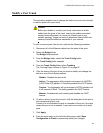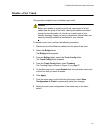
AT-GS950/16PS Switch Web Interface User’s Guide
95
Network equipment vendors tend to employ different techniques to
implement static trunks. Consequently, a static trunk on one device may
be incompatible with the same feature on a device from a different
manufacturer. For this reason static trunks are typically employed only
between devices from the same vendor. That is not to say that an Allied
Telesis Layer 2 managed switch cannot form a static trunk with a device
from another manufacturer; however, the implementations of static
trunking on the two devices may be incompatible.
Also, note that a static trunk does not provide for redundancy or link
backup. If a port in a static trunk loses its link, the trunk’s total bandwidth is
diminished. Although the traffic carried by the lost link is shifted to one of
the remaining ports in the trunk, the bandwidth remains reduced until the
lost link is re-established or you reconfigure the trunk by adding another
port to it.
General Guidelines
Following are the guidelines for creating a static trunk:
Allied Telesis recommends setting static port trunks
between Allied Telesis networking devices to ensure
compatibility.
A static trunk can contain up to eight ports.
The ports of a static trunk must be of the same medium
type. They can be all twisted-pair ports or all fiber optic
ports, but not a combination of the two.
The ports of a trunk can be either consecutive (for
example, Ports 2 through 4) or nonconsecutive (for
example, ports 3, 5, and 7).
Before creating a port trunk, verify that the settings are
the same for all ports in the trunk including speed
(1000/Full), duplex mode, flow control, back pressure
settings and VLAN membership. If these settings are
not the same, then the switch does not allow you to
create the trunk.
Note
When a trunk group is formed with only combo ports as members, all
port members are configured to the forced port mode at 1000/Full.
The trunk ports on the connecting network switch should also be
configured for 1000/Full to insure speed and duplex compatibility
between the switches.
After you have created a port trunk, a change to the
speed, duplex mode, flow control, or back pressure of
any port in the trunk automatically implements the
same change on all the other member ports.



